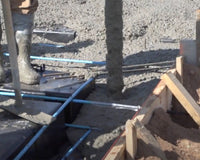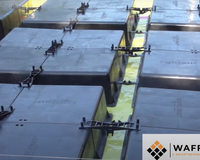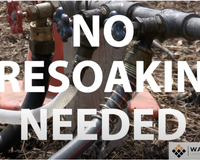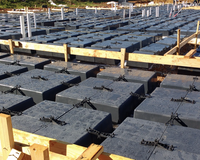A geotechnical survey is one of the most important pieces of any construction project. It can tell you everything you need to know about your soil before, during, and after design and construction. It’s used by owners, developers, architects, engineers, and contractors to ensure your structure is protected against soil problems.
What’s included in a geotechnical report, and how do you read it? Here’s what you need to know.

What a geotechnical report can tell you
In your report, you should find design recommendations for your structure and its foundation. The report will also include information on your soil’s drainage, weight-bearing capacity, stability, and risk from natural events like weather or earthquakes.
Geotechnical reports can tell you…
- Subsurface soil conditions
- Types of soils
- Risk factors
- Construction recommendations
- Design recommendations
- Soil composition and layers
- Drainage
- Weight capacity
Although there isn’t a national standard for what should be included in a soil report, your geotechnical report will tell you all the relevant information about your soil because your geotech tailors the report to your site’s intended use.
What is a boring report?
As part of your geotech’s soils investigation, specialized drills collect samples at specified depths around the construction site. The samples produced from boring are then sent to a lab for a soil test, checking water content, organic content, gradations, dry density, and the Atterberg Limits.
Your geotech will consider your project’s intended size and use to decide where and how deep to drill. Tall commercial buildings may require boring depths of hundreds of feet, while residential construction projects typically require no more than 15-30 feet. After a soil survey, bore holes are covered and sealed as required by local code.

How to read a geotechnical boring log
Geotechnical surveys offer a lot of information on your soil’s surface and subsurface conditions. The information contained in the report is purposed for various professionals involved in a construction project, so it’s natural to feel a little lost when reading it for the first time.
The format and contents of your soil survey will vary, but it should contain the following sections: an introduction, boring log, analysis, and recommendations. Here is a typical soil boring report example.
Checking for soil type
To check for soil type, read the material description. This will tell the composition of your soil at the specified depths and important information about its characteristics. Check for terms indicating whether your soil is cohesive, non-cohesive, or permeable. You may also find recommendations on how to build on top of your soil if it isn’t ideal for construction.
Water table
If there is no mention of water in your boring log, it means the water table isn’t high enough to affect the samples. If water is present, you may need to dewater to decrease the height of your water table.
Hard vs. soft soil
Look for the blow count to check how loose or soft your soil is. The lower the blow count, the softer your soil. This will serve as another good indicator of what technique and equipment will be required during excavation and construction.

Bore log report in foundation engineering
Because a foundation is the main point of contact a home has to its soil, structural engineers rely heavily on the information provided in a boring log report. The information in the boring log report will help determine the appropriate size, depth, and reinforcements required for your foundation.
The geotechnical report will tell you everything about the potential for soil movement, moisture, and risks associated with your area. It’s critical to the long-term integrity of a home and the safety of its inhabitants that you follow the recommendations made by your geotechnical engineer.
Your foundation and the structure it supports should be protected from problems caused by soil if you follow your report. You can also contact your geotechnical engineer with any questions if you are considering something outside the report or decide to make design changes.
Get a geotechnical report walkthrough
Reading a geotechnical report can feel overwhelming if you haven’t seen one before. We’ve worked with hundreds of engineers and seen countless geotechnical reports. Contact us to schedule a walkthrough of common soil report examples. Learn how to read crucial data for your project, choose the best foundation design, and cut construction costs.





